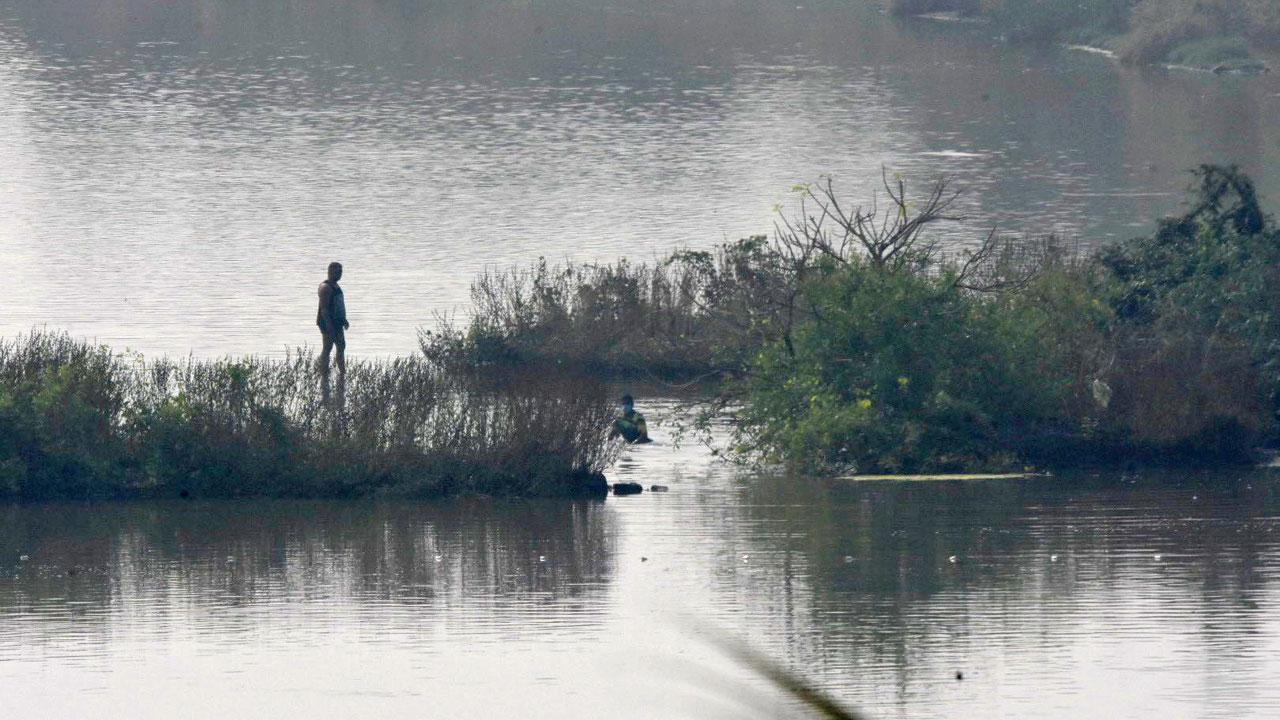Activists claim birds are being driven away from Talawe wetlands since the past year and half, say despite alerting various authorities, no steps have been taken so far

Two men can be seen at the Talawe wetlands
The potential threat to migratory birds coming to Talawe wetlands in Navi Mumbai, which is also known as birders’ paradise, doesn't seem to be stopping as Navi Mumbai-based nature lovers have once again alleged that some antisocial elements are using sticks to chase away birds. mid-day had earlier reported about how firecrackers were used to scare away birds at Panje wetlands in Uran. On January 3, a nature lover @mishti1661 tweeted, “Three men with sticks are chasing birds away at Talawe wetland. Yesterday there were tens of young lesser flamingoes flying in this area. But the level of water has been changed so that they don’t find it attractive. And now men are chasing by away small birds enjoying here. [sic]”
ADVERTISEMENT
Activist Sunil Agarwal, who has been fighting to save the wetlands and mangroves in the area, said, “This has been happening for the past one and half years. Blocking the outflow of water to increase the water level, making it unattractive to birds. And if birds still come here, they are chased away. We have been complaining to various authorities but they seem to be helpless in this matter.” He also told mid-day that he has complained about the same on several occasions to Navi Mumbai Municipal Corporation (NMMC) commissioner, Thane Collector, CIDCO Environment Department and also to Environment Minister Aaditya Thackeray.
Ulwe resident Abhijit Chattopadhyay, who is also a birder and photographer, has prepared a biodiversity list of species found in Talawe and DPS wetland/waterbody. “Both the wetlands are extremely important as they have a huge biodiversity. I have prepared a list of birds, butterflies and insects I have seen and photographed so far in the past two years in and around Talawe and DPS wetland/waterbody. I have documented 54 different species of birds, 20 species of butterflies from both these places. The best possible efforts should be taken to protect these biodiversity-rich
areas,” he said.
 Subscribe today by clicking the link and stay updated with the latest news!" Click here!
Subscribe today by clicking the link and stay updated with the latest news!" Click here!







